Five years ago, back in 2013, I began to post the Leon Schlesinger in-house newsletter The Exposure Sheet. However, I only got around to posting the first seven before other matters got in the way.
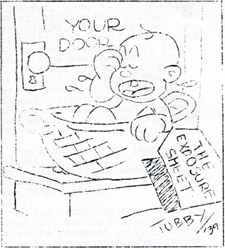 After posting the Warner Club News columns earlier this year I thought I should complete the job of getting the “Exposure Sheets” out. I also gave some thought to resuming where I left off or… for those who came in late… reprinting the first seven again to make it feel like a complete set (uninterrupted by a five year gap).
After posting the Warner Club News columns earlier this year I thought I should complete the job of getting the “Exposure Sheets” out. I also gave some thought to resuming where I left off or… for those who came in late… reprinting the first seven again to make it feel like a complete set (uninterrupted by a five year gap).
So here we go again – starting at the beginning. For some of you this is a ‘double-dip’, I’ll post two issues each week. I have about 40 issues that were gifted to me by the late Martha Sigall.
The Exposure Sheet was printed twice a month for about two years (mainly 1939 and 1940). Dave Mitchell (aka Milton Kahn) was a gag man and studio assistant who, among his duties, put newsletter together.
These are informal, gossipy little newsletters and, if read carefully, one can get a good idea of the fun Schlesinger’s employees were having making the original Looney Tunes and Merrie Melodies cartoons – and glean bits of biographical information, news and minutiae about our favorite artists at the studio.
There’s a lot of stuff to analyze in this first six-page issue – but I will point out a few highlights:
• Bios (aka “backgrounds”) on Bugs Hardaway and Dave Monahan,
• Bios on Ken Harris and John McGrew
• Info on inbetweener Constantine Lebedeff and inker Betty Bourke
• a Tubby Millar cartoon
(Click on the thumbnails below to enlarge pages). Enjoy!

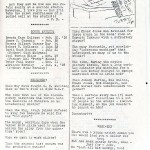


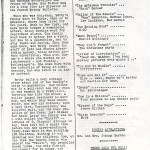

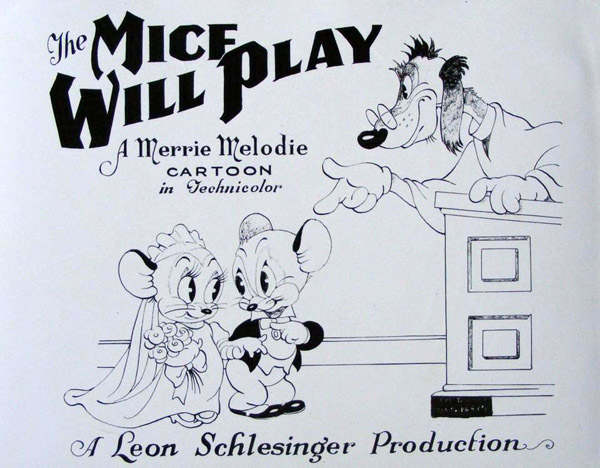
And here is the second issue of The Exposure Sheet (circa January 1939). Like the cartoons themselves, the newsletter doesn’t take itself all so seriously. The articles are a mix of gossip, employee bios, and bits of news sprinkled with poetry and humor pieces.
Lots of things to pick out and ponder in this issue – including:
• Notice of Pinto Colvig going off to Fleischer Studios
• Dates and theatres that some Looney Tunes and Merrie Melodies played in Hollywood
• Cal Dalton bio which mentions his start at Romer Grey and Ted Eshbaugh!
• Bios of Ace Gamer, Jack Miller and Phil DeLara.
• Background painter Peter Gaenger – that’s a new name to me!
All this and more. Click thumbnails below to enlarge. Enjoy!

NEXT WEEK: Issues #3 & 4


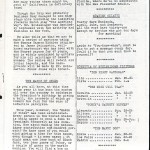
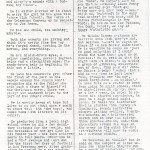
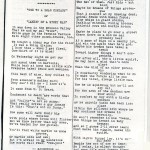
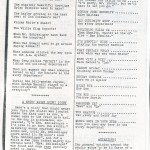
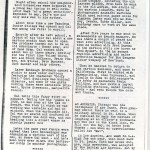

 Jerry Beck is a writer, animation producer, college professor and author of more than 15 books on animation history. He is a former studio exec with Nickelodeon Movies and Disney, and has written for The Hollywood Reporter and Variety. He has curated cartoons for DVD and Blu-ray compilations and has lent his expertise to dozens of bonus documentaries and audio commentaries on such. Beck is currently on the faculty of CalArts in Valencia, UCLA in Westwood and Woodbury University in Burbank – teaching animation history. More about Jerry Beck [
Jerry Beck is a writer, animation producer, college professor and author of more than 15 books on animation history. He is a former studio exec with Nickelodeon Movies and Disney, and has written for The Hollywood Reporter and Variety. He has curated cartoons for DVD and Blu-ray compilations and has lent his expertise to dozens of bonus documentaries and audio commentaries on such. Beck is currently on the faculty of CalArts in Valencia, UCLA in Westwood and Woodbury University in Burbank – teaching animation history. More about Jerry Beck [



































I like how the letterhead is done like a real exposure sheet. Very nice.
Interesting trivia: in some places, the exposure sheet is also known as a dope sheet – “dope” as in info, specifically gossip. Very appropriate for the content here.
So Colvig worked a bit at Schlesinger besides doing voices?
Re. Gaenger, according to an old post on GAC:
He was born Peter Paul Gaenger in Temesvar what was then the Austro-Hungarian Empire in 1885. He was educated in Vienna and must have been highly-connected as he designed a Gothic corridor for the castle of Archduke Francis Ferdinand (yes, the one who was killed, sparking WW1). He arrived in the U.S. in 1924 and lived in Detroit and Chicago before settling in Pittsburgh where, in addition to interior decorating and artwork, he translated poetry from Hungarian to German. There’s an interesting news story about how his home in 1928 was probably the only one in Pittsburgh furnished in the modernistic style. See http://goo.gl/GtjjB
Unfortunately, there’s nothing that says what kind of artist he was, but his interior design work took him all over the U.S.
It’s unclear when he moved to California (he seems to have re-married; in the mid-40s, he had a wife who was a Mormon from Utah with children by a previous marriage) but he was living in Alhambra in the ’50s. He died in Austria in 1976.
Pinto Colvig, who had several useful talents, was a free agent when he was suddenly dismissed from Disney in mid-1937 following a personality clash. He worked on various radio shows as a casual actor and also filled in for a time for both the new MGM cartoon plant and the Screen Gems animation studio in late 1937-38, where he wrote gags and contributed voices to cartoons like THE PYGMY HUNT for Metro and POOR LITTLE BUTTERFLY for Columbia. He then worked at Schlesinger’s for a short time as a gag man and voice artist, with his old friend, the designer Charlie Thorson. He contributed gags to shorts his voice is heard in, such as HOBO GADGET BAND, and also contributed to songs like his original Swingtime Down in Hobo Town and the Jolly Bakers Song, heard in BUSY BAKERS. By the time that was released Colvig was in Florida, specifically hired as the Bluto replacement voice, but also inevitably helping on gags.